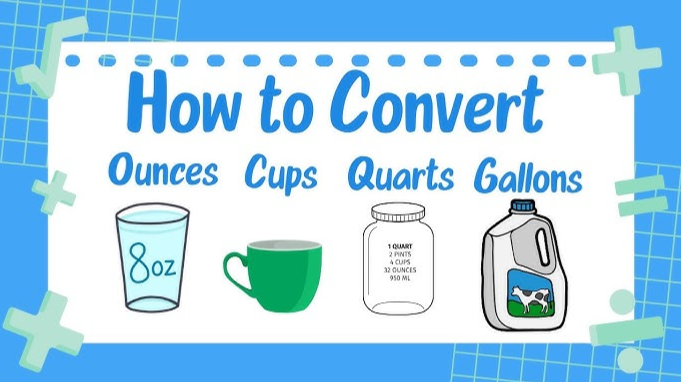How Many Ounces in a Gallon? A Simple Guide You’ll Remember

When you wonder how many ounces in a gallon, you are asking about a very simple but very important measurement. This question often comes up when cooking, making drinks, or even filling water bottles. Knowing this helps you avoid mistakes in recipes and saves time when measuring. In the United States, one gallon has 128 fluid ounces. But in other countries, a gallon may be a little different, so it is important to know which type you are talking about. Once you understand the answer, it becomes much easier to measure liquids for any task. This knowledge is also handy when you read labels on drinks or containers, as it helps you know how much liquid you are really getting.
When we talk about how many ounces in a gallon, we should also understand why this measurement matters. If you are on a fitness journey and tracking your daily water intake, knowing the ounce-to-gallon conversion helps you plan better. For example, if your water bottle holds 16 ounces, you will know you need to drink eight bottles to reach a full gallon. The same is true in cooking, where recipes might call for gallons, quarts, or ounces, and you need to switch between them quickly. Even gardeners use this when mixing plant food in water. Learning this once will help you in many parts of life—whether in the kitchen, gym, or garden—and makes you feel more confident with measuring liquids.
What Does a Gallon Really Mean
A gallon is a unit used to measure liquids. It is bigger than a quart, pint, or cup. In the US, a gallon is part of the imperial system, and it equals 128 fluid ounces. The word “gallon” comes from old French and Latin words used hundreds of years ago. Today, gallons are common in recipes, fuel measurements, and drink packaging. However, not every country uses the same gallon. In the UK and Canada, an imperial gallon is larger than a US gallon. This difference can be important when reading foreign recipes or buying imported products.
Exact Answer: How Many Ounces in a Gallon in the US and UK
In the United States, one gallon equals 128 US fluid ounces. In the United Kingdom and Canada, one gallon equals 160 UK fluid ounces. This means if you switch between these measurements without knowing, your recipe could be too watery or too thick. For example, 1 gallon of milk in the US is slightly smaller than 1 gallon of milk in the UK. Understanding these differences is important for cooking, traveling, or learning about products from other countries.
Why This Simple Conversion Can Save You Time and Effort
Knowing how many ounces are in a gallon means you don’t need to stop and search online each time you measure something. You can pour liquids faster and with confidence. For example, if you need half a gallon, you instantly know it’s 64 ounces. If your drink container says it holds 32 ounces, you know two of them make half a gallon. This saves time in the kitchen, gym, or any daily task where you handle liquids.
Easy Tricks to Remember the Gallon-to-Ounce Formula
A fun way to remember the conversion is the “Gallon Man” trick, where one gallon is divided into four quarts, each quart into two pints, and each pint into two cups. Since one cup is 8 ounces, you can work backward:
- 1 gallon = 4 quarts = 8 pints = 16 cups
- 16 cups × 8 ounces = 128 ounces
Once you practice this once or twice, you’ll never forget it again. Another easy tip is to remember that half a gallon is 64 ounces, and a quarter gallon is 32 ounces.
Everyday Uses of the Ounce and Gallon Conversion
This measurement is used in so many places. Athletes track their water intake in ounces but may have a goal in gallons. Chefs mix sauces or soups using gallons but portion them out in ounces. Gardeners add plant food in gallons of water. Even cleaning products often list how much to mix per gallon. Knowing this conversion helps you make smart choices, avoid waste, and prepare the right amounts for any job.
Comparing Gallons in Cooking, Fitness, and Gardening
In cooking, you might need a gallon of broth, milk, or juice for big family meals. In fitness, many people aim to drink a gallon of water a day for hydration. In gardening, fertilizers often tell you to mix a certain number of ounces into a gallon of water. In each of these, accuracy matters. Too little can make something weak or ineffective, and too much can spoil the result or even damage plants.
Common Mistakes People Make When Measuring Gallons and Ounces
A common mistake is mixing up weight ounces with fluid ounces. Weight ounces measure mass, while fluid ounces measure volume. Another mistake is assuming the UK gallon and US gallon are the same—they are not. Some people also try to “eyeball” the measurement without a proper measuring cup, which can cause problems in recipes or when following instructions for products. Using the right measuring tool always makes a difference.
Quick Conversion Chart for Gallons, Quarts, Pints, and Ounces
Here’s a simple chart you can use:
- 1 gallon = 128 US fluid ounces
- 1 gallon = 4 quarts
- 1 quart = 32 ounces
- 1 gallon = 8 pints
- 1 pint = 16 ounces
- 1 gallon = 16 cups
- 1 cup = 8 ounces
Keep this handy in your kitchen or workspace, and you’ll never be confused again.
Conclusion
Knowing how many ounces in a gallon is a basic but very useful skill. It helps in cooking, fitness, gardening, cleaning, and more. In the US, a gallon equals 128 ounces, but in the UK, it equals 160 ounces. Always check which measurement you are using, and remember the simple formulas to avoid mistakes. This little piece of knowledge can save you time, prevent errors, and make everyday tasks easier.
FAQs
Q1: Is a gallon the same everywhere?
No. In the US, a gallon is 128 fluid ounces, while in the UK and Canada, it’s 160 fluid ounces.
Q2: How many 16-ounce bottles are in a gallon?
Eight 16-ounce bottles equal one US gallon.
Q3: How can I quickly convert gallons to ounces?
Multiply the number of gallons by 128 for US gallons.





